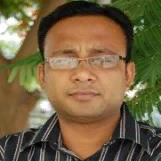
Saurabh Agarwal
Work place: Dept. of Computer Engineering, Netaji Subhash Institute of Technology, Sector-3, Dwarka, New Delhi, 110078, India
E-mail: saurabhnsit2510@gmail.com
Website:
Research Interests: Engineering, Software Engineering, Software Development Process, Software Design, Software Construction, Computational Engineering, Computational Science and Engineering
Biography
Saurabh Agarwal has received his B.Tech from Barkatullah University, Bhopal in Computer Science and Engineering and his M.Tech from Uttar Pradesh Technical University, Lucknow in Software Engineering. He is pursuing Ph.D in Department of Computer Engineering, Netaji Subhas Institute of Technology, New Delhi, India.
Author Articles
Anti-Forensics of JPEG Images using Interpolation
By Saurabh Agarwal Satish Chand
DOI: https://doi.org/10.5815/ijigsp.2015.12.02, Pub. Date: 8 Nov. 2015
The quantization artifacts and blocking artifacts are the two significant properties for identifying the forgery in a JPEG compressed image. There are some techniques for JPEG compressed images that can remove these artifacts resulting no traces for forgery. These methods are referred as anti-forensic methods. A forger may perform some post-operations to disturb the underlying statistics of JPEG images to fool current forensic techniques. These methods create noise and reduce the image quality. In this paper we apply three different interpolation techniques namely nearest neighbor, bilinear and bicubic techniques to remove JPEG artifacts. The experimental results show that the bicubic interpolated images are found to be of better quality as compare to the nearest neighbor and bilinear interpolated images with no JPEG artifacts. For quality analysis of these interpolation methods on the images three popular quality metric are used. The proposed method is very simple to perform. This interpolation based method is applicable to both single and double JPEG compression.
[...] Read more.Image Forgery Detection using Multi Scale Entropy Filter and Local Phase Quantization
By Saurabh Agarwal Satish Chand
DOI: https://doi.org/10.5815/ijigsp.2015.10.08, Pub. Date: 8 Sep. 2015
Performing digital image forgery is very easy due to highly precise image editing tools. There is a concomitant need to have some mechanism to differentiate between a forged image and the original image. In this paper, we propose a passive image forgery detection method that uses entropy filter and local phase quantization (LPQ) texture operator. The entropy filter generally highlights the boundary of the forged regions. It is due to the fact that the entropy filter provides the randomness of a pixel in its local neighborhood. The LPQ operator provides internal statistics of the image based on the phase information. We apply entropy filter on different sized neighborhoods followed by LPQ operator on the CASIA v1.0, CASIA v2.0 and Columbia image forgery evaluation databases. We consider these databases in our experiments because these are standard databases and have been used in most of the methods. Our method provides promising results on both CASIA databases; however, they are comparable on Columbia database with that of the existing state of the art methods.
[...] Read more.Other Articles
Subscribe to receive issue release notifications and newsletters from MECS Press journals